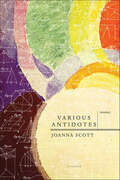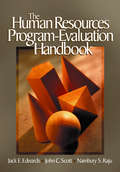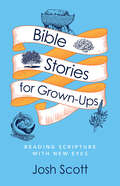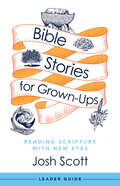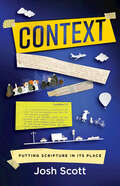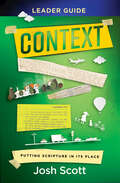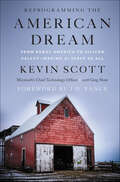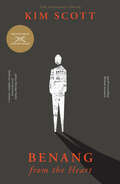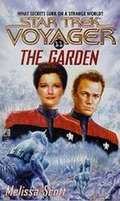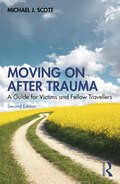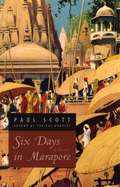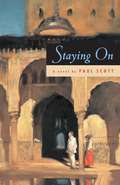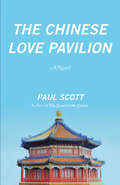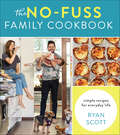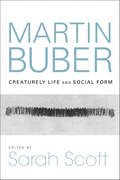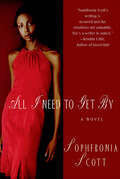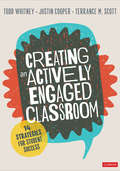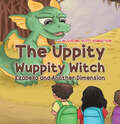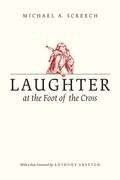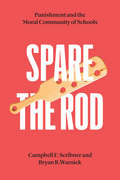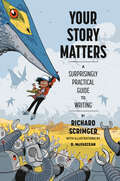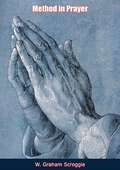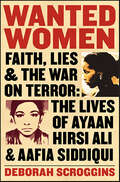- Table View
- List View
Various Antidotes: Stories
by Joanna Scott"A greatly gifted and highly original artist...Various Antidotes is purely and simply wonderful."--The New York Times Book ReviewThe miraculous, transformative stories of Joanna Scott's Various Antidotes range across the world of history and science, alighting on figures both real and imaginary. The stories within are those of obsession and brilliance, of the ultimately human recognition that the world is larger than we believe it to be and that we, as figures within it, have through understanding the power to change that world. Whether through learning or madness or accident, the scientists and students within Various Antidotes expose us to the glorious blossom of the natural world.
The Human Resources Program-Evaluation Handbook
by John C. Scott Nambury S. Raju Jack E. EdwardsTechnological advances and rapid changes in workforce demographics pose extensive challenges to human resources program evaluators. But little has been done to document successful human resources program assessment and implementation strategies. The Human Resources Program-Evaluation Handbook is the first book to present state-of-the-art procedures for evaluating and improving human resources programs. Editors Jack E. Edwards, John C. Scott, and Nambury S. Raju provide a user-friendly yet scientifically rigorous "how to" guide to organizational program-evaluation. Integrating perspectives from a variety of human resources and organizational behavior programs, a wide array of contributing professors, consultants, and governmental personnel successfully link scientific information to practical application. Offering authoritative guidance to both novice and experienced program evaluators, this unique guidebook includes New perspectives on organizational program-evaluation Methods to assess the efficiency of human resources programs Identification of potential pitfalls Real-life examples Additional references for program-evaluation best practices The Human Resources Program-Evaluation Handbook provide program-evaluation teams with content-specific guidance. Supplying useful and accurate evaluation techniques, the editors present a manual for enhancing the effectiveness and efficiency of most major types of human resources programs. Designed for academics and graduate students in industrial-organizational psychology, human resources management, and business, the handbook is also an essential resource for human resources professionals, consultants, and policy makers.
The Human Resources Program-Evaluation Handbook
by John C. Scott Nambury S. Raju Jack E. EdwardsTechnological advances and rapid changes in workforce demographics pose extensive challenges to human resources program evaluators. But little has been done to document successful human resources program assessment and implementation strategies. The Human Resources Program-Evaluation Handbook is the first book to present state-of-the-art procedures for evaluating and improving human resources programs. Editors Jack E. Edwards, John C. Scott, and Nambury S. Raju provide a user-friendly yet scientifically rigorous "how to" guide to organizational program-evaluation. Integrating perspectives from a variety of human resources and organizational behavior programs, a wide array of contributing professors, consultants, and governmental personnel successfully link scientific information to practical application. Offering authoritative guidance to both novice and experienced program evaluators, this unique guidebook includes New perspectives on organizational program-evaluation Methods to assess the efficiency of human resources programs Identification of potential pitfalls Real-life examples Additional references for program-evaluation best practices The Human Resources Program-Evaluation Handbook provide program-evaluation teams with content-specific guidance. Supplying useful and accurate evaluation techniques, the editors present a manual for enhancing the effectiveness and efficiency of most major types of human resources programs. Designed for academics and graduate students in industrial-organizational psychology, human resources management, and business, the handbook is also an essential resource for human resources professionals, consultants, and policy makers.
Bible Stories for Grown-Ups: Reading Scripture with New Eyes
by Josh ScottRead the Bible for the first time – again. In Bible Stories for Grown-Ups: Reading Scripture with New Eyes pastor Josh Scott looks at familiar Bible stories and reveals new details and interpretations for an adult audience. This six-week Bible study will consider stories many read as children including Noah's Ark, the binding of Isaac, Jonah and the big fish, Jesus and Zacchaeus, Jesus healing a blind man, and the parable of the talents. Scott reimagines these stories and opens new visions for readers to understand well known pieces of Scripture in our current cultural environment.The book can be read alone or used by small groups, and can be used anytime throughout the year. Additional components include video teaching sessions featuring Josh Scott, and a comprehensive leader guide, making this perfect as a six-week group study done throughout the year.
Bible Stories for Grown-Ups Leader Guide: Reading Scripture with New Eyes
by Josh ScottRead the Bible for the first time – again. In Bible Stories for Grown-Ups: Reading Scripture with New Eyes pastor Josh Scott looks at familiar Bible stories and reveals new details and interpretations for an adult audience. This six-week Bible study will consider stories many read as children including Noah's Ark, the binding of Isaac, Jonah and the big fish, Jesus and Zacchaeus, Jesus healing a blind man, and the parable of the talents. Scott reimagines these stories and opens new visions for readers to understand well known pieces of Scripture in our current cultural environment.The Leader Guide contains everything needed to guide a group through the six-week study, including session plans, activities, discussion questions, and multiple format options. Additional components include the book, Bible Stories for Grown-Up, and video teaching sessions featuring Josch Scott, making this perfect as a group study throughout the year.
Context: Putting Scripture in Its Place
by Josh ScottExploring the Chapter Behind the Verse. Context looks at verses we know by heart but may not know the people, places, and times that give them meaning. Josh Scott delves into these well-known Scripture verses, exploring their true meanings by examining them in their original biblical context. Through this process, he unveils fresh and enlightening interpretations that are often missed when these Scriptures are taken out of context. The book can be read alone or used by small groups anytime throughout the year. Components include video teaching sessions featuring Josh Scott and a comprehensive Leader Guide, making this perfect as a six-week group study.
Context Leader Guide: Putting Scripture in Its Place
by Josh ScottExploring the Chapter Behind the Verse. The Leader Guide contains everything needed to guide a group through the six-week study, including session plans, activities, discussion questions, and multiple format options. Components include a book, Context: Putting Scripture in Its Place, and video teaching sessions featuring Josh Scott, making this perfect as a group study throughout the year. Context looks at verses we know by heart but may not know the people, places, and times that give them meaning. Josh Scott delves into these well-known Scripture verses, exploring their true meanings by examining them in their original biblical context. Through this process, he unveils fresh and enlightening interpretations that are often missed when these Scriptures are taken out of context.
Reprogramming the American Dream: From Rural America to Silicon Valley—Making AI Serve Us All
by Kevin Scott Greg Shaw** #1 Wall Street Journal Bestseller **In this essential book written by a rural native and Silicon Valley veteran, Microsoft’s Chief technology officer tackles one of the most critical issues facing society today: the future of artificial intelligence and how it can be realistically used to promote growth, even in a shifting employment landscape.There are two prevailing stories about AI: for heartland low- and middle-skill workers, a dystopian tale of steadily increasing job destruction; for urban knowledge workers and the professional class, a utopian tale of enhanced productivity and convenience. But there is a third way to look at this technology that will revolutionize the workplace and ultimately the world. Kevin Scott argues that AI has the potential to create abundance and opportunity for everyone and help solve some of our most vexing problems.As the chief technology officer at Microsoft, he is deeply involved in the development of AI applications, yet mindful of their potential impact on workers—knowledge he gained firsthand growing up in rural Virginia. Yes, the AI Revolution will radically disrupt economics and employment for everyone for generations to come. But what if leaders prioritized the programming of both future technology and public policy to work together to find solutions ahead of the coming AI epoch? Like public health, the space program, climate change and public education, we need international understanding and collaboration on the future of AI and work. For Scott, the crucial question facing all of us is this: How do we work to ensure that the continued development of AI allows us to keep the American Dream alive?In this thoughtful, informed guide, he offers a clear roadmap to find the answer.
Benang: From the Heart
by Kim ScottOceanic in its rhythms and understanding, brilliant in its use of language and image, moving in its largeness of spirit, compelling in its narrative scope and style, this intriguing journey is a celebration and lament—of beginning and return, of obliteration and recovery, of silencing, and of powerful utterance. Both tentative and daring, it speaks to the present and a possible future through stories, dreams, rhythms, songs, images and documents mobilized from the incompletely acknowledged and still dynamic past.
The Garden (Star Trek: Voyager #11)
by Melissa ScottDesperately in need of vital nutritional supplies, the crew of the USS VoyagerTM must risk dealing with an enigmatic race known as the Kirse, legendary for the bountiful crops of their world - and for their secretive ways. Despite Neelix's warnings, Captain Janeway leads an Away Team to the Kirse homeworld. But when the hostile Andirrim attack the Kirse, Janeway finds herself caught in a deadly situation. Forced to fight alongside the Kirse, Janeway and her crew can only hope that their strange, new allies are not more dangerous than their common foe.
Moving On After Trauma: A Guide for Victims and Fellow Travellers
by Michael J. ScottExtreme trauma can have devastating emotional, relational, physical and legal effects. This book offers hope, providing survivors, family and friends with a roadmap for managing obstacles to recovery.This second edition shifts the focus from reliving the trauma to 12 rules for ‘moving on after trauma’ by making the centrality accorded to the trauma the pre-eminent target rather than the traumatic experience itself. In this approach, the trauma victim’s intense desire not to talk or think about the trauma is no longer seen as pathological. The book also addresses the wider concerns of the traumatised about justice, group treatments and medication; with suggested strategies tailored to a wide range of possible traumatic responses including PTSD, specific phobias, panic disorder, depression and body dysmorphic disorder. An important focus in this new edition is the restoration of the sense of self. For those traumatised earlier on in life guidance is given on the creation of a stable sense of self.This one-of-a-kind trauma survivor guide will be beneficial for any survivor of trauma along with their fellow travellers to recovery, including family, friends, therapists, managers, clergy and lawyers. It can also serve as a companion volume to Personalising Trauma Treatment: Reframing and Reimagining (2022) for mental health professionals.
Six Days in Marapore: A Novel
by Paul ScottIn this swiftly paced and lyrical novel about British expatriates at the time of Indian independence, Paul Scott grapples with the themes of race, possession, and history that dominate all four novels of his masterpiece, The Raj Quartet, especially The Jewel in the Crown. As always, Scott fills his book with vivid characters: the seductive, bigoted war widow; the sophisticated, wily Hindu politician; and the athletic young American who only gradually begins to understand the legacy of pain and hatred veiling the woman he has come to rescue. Set against the backdrop of a nation in violent transition—a climate of exhilaration and shifting loyalties—Six Days in Marapore unfolds amidst the possibility of reconciliation, freedom, and healing. "Scott's brief characterizations are as important to Six Days in Marapore as the basic plot . . . This is not primarily a novel of India, but rather more of frightened foreigners living there at the end of their era."—New York Times "Intense, abrasive, the many conflicts and telltale stigmata of Hindu and Moslem, white and off white, give this its uncertain temper and certain suspense."—Kirkus Reviews
Staying On: A Novel (Phoenix Fiction Ser.)
by Paul ScottIn this sequel to The Raj Quartet, Colonel Tusker and Lucy Smalley stay on in the hills of Pankot after Indian independence deprives them of their colonial status. Finally fed up with accommodating her husband, Lucy claims a degree of independence herself. Eloquent and hilarious, she and Tusker act out class tensions among the British of the Raj and give voice to the loneliness, rage, and stubborn affection in their marriage. Staying On won the Booker Prize in 1977 and was made into a motion picture starring Trevor Howard and Celia Johnson in 1979. "Staying On far transcends the events of its central action. . . . [The work] should help win for Scott . . . the reputation he deserves—as one of the best novelists to emerge from Britain's silver age."—Robert Towers, Newsweek "Scott's vision is both precise and painterly. Like an engraver cross-hatching in the illusion of fullness, he selects nuances that will make his characters take on depth and poignancy."—Jean G. Zorn, New York Times Book Review "A graceful comic coda to the earlier song of India. . . . No one writing knows or can evoke an Anglo-Indian setting better than Scott."—Paul Gray, Time "Staying On provides a sort of postscript to [Scott's] deservedly acclaimed The Raj Quartet. . . . He has, as it were, summoned up the Raj's ghost in Staying On. . . . It is the story of the living death, in retirement, and the final end of a walk-on character from the quartet. . . . Scott has completed the task of covering in the form of a fictional narrative the events leading up to India's partition and the achievement of independence in 1947. It is, on any showing, a creditable achievement."—Malcolm Muggeridge, New York Times Book Review
The The Chinese Love Pavilion: A Novel
by Paul ScottPaul Scott is most famous for his much-beloved tetralogy The Raj Quartet, an epic that chronicles the end of the British rule in India with a cast of vividly and memorably drawn characters. Inspired by Scott’s own time spent in India and Malaya during World War II, this two powerful novel provides valuable insight into how foreign lands changed the British who worked and fought in them, hated and loved them. The Chinese Love Pavilion follows a young British clerk, Tom Brent, who must track down a former friend—now suspected of murder—in Malaya. Tom faces great danger, both from the mysterious Malayan jungles and the political tensions between British officers, but the novel is perhaps most memorable for the strange, beautiful romance between Tom and a protean Eurasian beauty whom he meets in the eponymous Chinese Love Pavilion.
The No-Fuss Family Cookbook: Simple Recipes for Everyday Life
by Ryan ScottYour new go-to collection of easy, family-friendly recipes, from popular chef and television personality Ryan Scott Emmy Award–winning celebrity chef (and dad) Ryan Scott knows well that family life is wonderful, but can be a very hectic business—stressing over mealtime shouldn&’t add to the madness! This heartfelt collection comes straight from his home kitchen&’s regular rotation into yours. Reflecting Ryan&’s colorful personality and practical approach, the recipes are kid-friendly and packed with clever hacks and pro tips for getting meals on the table (and cleaning up) quickly. There are no fussy cooking techniques or long ingredient lists; instead, the focus is on family-centered meals for even the busiest of days—irresistible recipes like Turkey Reuben Meatloaf, Broccoli-Cheddar Bow Ties, and Naturally Sweet PB&J Pancakes. Even crowd-pleasing desserts like Everything-But-the-Kitchen-Sink Cookies and Butterscotch Marshmallow Squares remain delightfully simple, for minimal stress and maximum fun.
Martin Buber: Creaturely Life and Social Form (New Jewish Philosophy and Thought)
by Sarah ScottA new collection of essays highlighting the wide range of Buber's thought, career, and activism. Best known for I and Thou, which laid out his distinction between dialogic and monologic relations, Martin Buber (1878–1965) was also an anthologist, translator, and author of some seven hundred books and papers. Martin Buber: Creaturely Life and Social Form, edited by Sarah Scott, is a collection of nine essays that explore his thought and career.Martin Buber: Creaturely Life and Social Form shakes up the legend of Buber by decentering the importance of the I-Thou dialogue in order to highlight Buber as a thinker preoccupied by the image of relationship as a guide to spiritual, social, and political change. The result is a different Buber than has hitherto been portrayed, one that is characterized primarily by aesthetics and politics rather than by epistemology or theology. Martin Buber: Creaturely Life and Social Form will serve as a guide to the entirety of Buber's thinking, career, and activism, placing his work in context and showing both the evolution of his thought and the extent to which he remained driven by a persistent set of concerns.
All I Need to Get By: A Novel
by Sophfronia ScottCrita has come a long way from her small-town Ohio roots. A successful tax accountant living in Manhattan, she finally has the independent life that she dreamed of as a girl. However, with one fateful phone call, Crita's life is turned upside down. Suddenly back home, living under her parent's roof, Crita must confront two powerful men from her childhood--Link, her destructive brother with whom she shares a dark secret, and Tree, her first love.Facing memories that she would rather forget, Crita struggles to reconcile a tumultuous past with a calmer, quieter present. Needing help along the way, she may even learn to lean on Tree, the only man who could ever give her "what she needs to get by." In this riveting debut novel, All I Need to Get By, Sophfronia Scott speaks for anyone that knows just how hard it is to go back home again.
Creating an Actively Engaged Classroom: 14 Strategies for Student Success
by Terrance M. Scott Todd Whitney Justin T. CooperMake your lessons interesting, interactive, and engaging Successful lessons are explicit, yet also inspire active learning and opportunities to respond. As the one shaping lessons, can you do better? Probably, and you’re not alone. Research shows teachers consistently offer students far fewer than the recommended opportunities to respond, leaving all students—including those with special needs and behavior challenges—less than engaged and falling short of their best chance for success. With this book, you’ll discover 14 strategies you can translate directly to your classroom, complete with descriptions, advantages and disadvantages of each, and how and when best to use them. Divided into three parts, you will be guided through Verbal engagement strategies, such as whip around, choral responding, quick polls, and individual questioning Non-verbal engagement strategies, such as stop and jot, guided notes, response cards, and hand signals Partner and teaming strategies, such as turn & talk, cued retell, four corners, and classroom mingle Dive into these strategies and transform your classroom into a rich and interactive environment—no matter the subject, context, or age of your students.
Creating an Actively Engaged Classroom: 14 Strategies for Student Success
by Terrance M. Scott Todd Whitney Justin T. CooperMake your lessons interesting, interactive, and engaging Successful lessons are explicit, yet also inspire active learning and opportunities to respond. As the one shaping lessons, can you do better? Probably, and you’re not alone. Research shows teachers consistently offer students far fewer than the recommended opportunities to respond, leaving all students—including those with special needs and behavior challenges—less than engaged and falling short of their best chance for success. With this book, you’ll discover 14 strategies you can translate directly to your classroom, complete with descriptions, advantages and disadvantages of each, and how and when best to use them. Divided into three parts, you will be guided through Verbal engagement strategies, such as whip around, choral responding, quick polls, and individual questioning Non-verbal engagement strategies, such as stop and jot, guided notes, response cards, and hand signals Partner and teaming strategies, such as turn & talk, cued retell, four corners, and classroom mingle Dive into these strategies and transform your classroom into a rich and interactive environment—no matter the subject, context, or age of your students.
The Uppity Wuppity Witch – Ezabella and Another Dimension
by Jacqueline Scott-RobertsonThis is a story about Sonny, Ava, and Ryder who venture far into the woods to find magic and intrigue. How are they going to help Ezabella, who is crying, as her magic and spell book have been stolen by the Wubbery Rubbery Goblins? Ezabella cannot remember her spells properly, so she mistakenly puts the stripes of Zebra on Hector the elephant. Meanwhile, Radcliffe the dragon can no longer blow fire. Who are the other animals and creatures of the wood who help them find the magic and spell book? Can the fairies from the Mushroom Village help? Can the wise owl and old man tree help? Will Zebra get back hisstripes? Will Radcliffe the dragon be able to blow fire again? The author, Jacqueline Thom, is a woman who loves bringing happiness and joy to children and intends to do the same using the magic in this book.
Laughter at the Foot of the Cross
by Michael A. Screech“Christian laughter is a maze: you could easily get snarled up within it.” So says Michael A. Screech in his note to readers preceding this collection of fifty-three elegant and pithy essays. As Screech reveals, the question of whether laughter is acceptable to the god of the Old and New Testaments is a dangerous one. But we are fortunate in our guide: drawing on his immense knowledge of the classics and of humanists like Erasmus and Rabelais—who used Plato and Aristotle to interpret the Gospels—and incorporating the thoughts of Aesop, Calvin, Lucian of Samosata, Luther, Socrates, and others, Screech shows that Renaissance thinkers revived ancient ideas about what inspires laughter and whether it could ever truly be innocent. As Screech argues, in the minds of Renaissance scholars, laughter was to be taken very seriously. Indeed, in an era obsessed with heresy and reform, this most human of abilities was no laughing matter.
Spare the Rod: Punishment and the Moral Community of Schools (History And Philosophy Of Education Ser.)
by Campbell F. Scribner Bryan R. WarnickSpare the Rodtraces the history of discipline in schools and its ever increasing integration with prison and policing, ultimately arguing for an approach to discipline that aligns with the moral community that schools could and should be. In Spare the Rod, historian Campbell F. Scribner and philosopher Bryan R. Warnick investigate the history and philosophy of America’s punishment and discipline practices in schools. To delve into this controversial subject, they first ask questions of meaning. How have concepts of discipline and punishment in schools changed over time? What purposes are they supposed to serve? And what can they tell us about our assumptions about education? They then explore the justifications. Are public school educators ever justified in punishing or disciplining students? Are discipline and punishment necessary for students’ moral education, or do they fundamentally have no place in education at all? If some form of punishment is justified in schools, what ethical guidelines should be followed? The authors argue that as schools have grown increasingly bureaucratic over the last century, formalizing disciplinary systems and shifting from physical punishments to forms of spatial or structural punishment such as in-school suspension, school discipline has not only come to resemble the operation of prisons or policing, but has grown increasingly integrated with those institutions. These changes and structures are responsible for the school-to-prison pipeline. They show that these shifts disregard the unique status of schools as spaces of moral growth and community oversight, and are incompatible with the developmental environment of education. What we need, they argue, is an approach to discipline and punishment that fits with the sort of moral community that schools could and should be.
Your Story Matters: A Surprisingly Practical Guide to Writing
by Richard ScrimgerA hilarious how-to on creative writing that makes the writing process fun for aspiring middle-school authors. For fans of Writing Radar by Jack Gantos.Interested in writing but don't know how to get started?Love reading and want to know more about how stories are created?Like ridiculous tales about troublesome sisters, peanut butter and steamrollers?Look no further!Esteemed writer Richard Scrimger is here to answer all your burning questions about writing: whether about plot, character, structure, story hooks or commas. (Actually, don't ask him about commas, it's not that kind of book.)Using clever (so he thinks) analogies, (sort of) brilliant examples and funny (well . . .) anecdotes, he will give you (truly) useful tools to start you on your way as a writer. And if that's not enough, comic illustrations by D. McFadzean are the pepperoni on the writing pizza! (That will make sense once you read the book.)So come, read this book and start your writing journey!
Method in Prayer
by W. Graham ScroggieDeepen your spiritual practice with W. Graham Scroggie's Method in Prayer, a timeless guide designed to enrich and transform your prayer life. Drawing from the wisdom of Scripture and years of pastoral experience, Scroggie offers a structured and insightful approach to prayer that is both accessible and profound.W. Graham Scroggie, a distinguished pastor, and theologian, presents a comprehensive exploration of the principles and practices that underpin effective prayer. In Method in Prayer, he meticulously examines the various aspects of prayer, from adoration and confession to thanksgiving and supplication, providing readers with a balanced and holistic understanding of this vital spiritual discipline.The book delves into the biblical foundations of prayer, highlighting key passages and teachings that illustrate the power and importance of communion with God. Scroggie’s clear and thoughtful exposition helps readers grasp the deeper theological significance of prayer, encouraging them to develop a more intimate and dynamic relationship with the Divine.Method in Prayer also offers practical guidance for overcoming common obstacles and distractions that can hinder a fruitful prayer life. Scroggie addresses issues such as maintaining focus, cultivating a sincere heart, and aligning one’s will with God’s purposes, providing valuable tools for personal spiritual growth.This book is an essential resource for believers seeking to enhance their prayer practice, whether they are new to the faith or seasoned in their spiritual journey. Scroggie’s warm and pastoral tone, combined with his deep theological insight, makes Method in Prayer a treasured companion for anyone desiring to deepen their connection with God.
Wanted Women: Faith, Lies, and the War on Terror: The Lives of Ayaan Hirsi Ali and Aafia Siddiqui
by Deborah ScrogginsThe author of Emma’s War offers a compelling account of the link between Muslim women’s rights, Islamist opposition to the West, and the Global War on Terror.Wanted Women explores the experiences of two fascinating female champions from opposing sides of the conflict: Islam critic Ayaan Hirsi Ali and neuroscientist Aafia Siddiqui. With Emma’s War: An Aid Worker, A Warlord, Radical Islam and the Politics of Oil, journalist Deborah Scroggins achieved major international acclaim; now, in Wanted Women, Scroggins again exposes a crucial untold story from the center of an ongoing ideological war—laying bare the sexual and cultural stereotypes embraced by both sides of a conflict that threatens to engulf the world.
